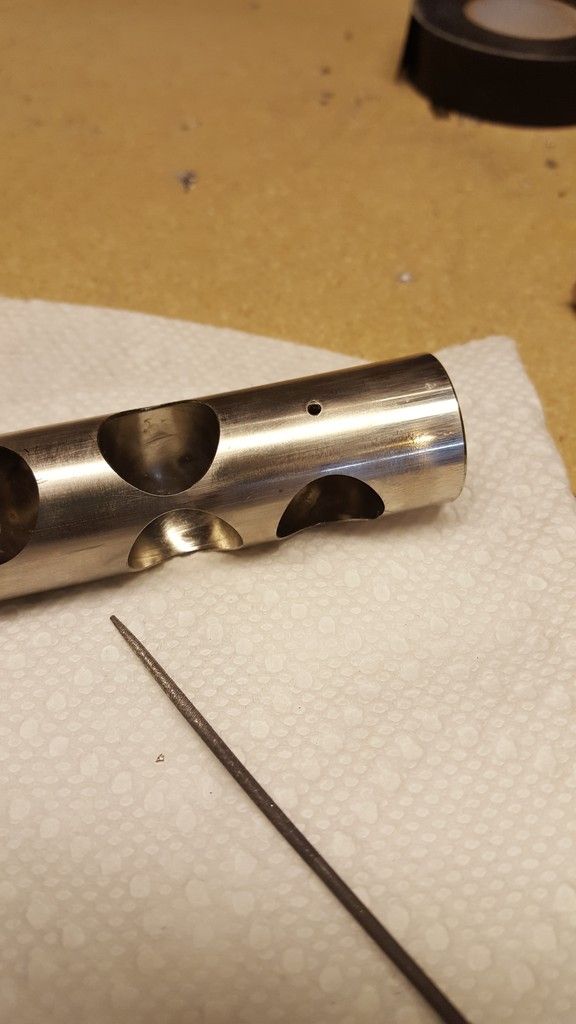Page 1 of 1
Finally worked up the courage...
Posted: Mon Nov 07, 2016 11:51 am
by Tubajug
...and I vented the valves in my King/Holton tuba this weekend. I did a practice run on a baritone valve I had around and finally went for it and had no incidents doing all four valves. Whew!

Re: Finally worked up the courage...
Posted: Mon Nov 07, 2016 5:33 pm
by Dan Schultz
BRAVO! That's how you learn stuff. Did you use a stop on your drill? ... or just control the depth of the drill quill?
Re: Finally worked up the courage...
Posted: Mon Nov 07, 2016 9:31 pm
by Tubajug
Thanks for the replies guys. To answer your question Dan, I did my practice run on the baritone valve "free hand" and almost drilled through the wall of the port as well...oops! So when I did it for real, I just wrapped some electrical tape around the drill bit to act as a stopper so I wouldn't drill in too far.
I might drill out the hole a little more in the first valve slide, as you suggested bloke, as I still feel some resistance when pulling on that one. I used a 5/64" was all. A 7/32" is a pretty big hole!
Re: Finally worked up the courage...
Posted: Mon Nov 07, 2016 10:25 pm
by Dan Schultz
bloke wrote: ...so does it scare people away when I admit here that I (simply) only drill about "yea deep"...??

....
Yup. I've done that, too. Sometimes I don't take my own advice. But... I've learned that just setting a depth stop on a drill press isn't enough if the drill decides to 'grab'. These days I use a piece of wood over the drill so that only 1/8" or so of the drill is exposed.
Re: Finally worked up the courage...
Posted: Tue Nov 08, 2016 1:09 pm
by MaryAnn
Someone please explain venting to me. It looks like "installing a leak" ... and this is a serious question.
Re: Finally worked up the courage...
Posted: Tue Nov 08, 2016 1:41 pm
by Rick F
The small vent hole lines up with one leg of the valve's slide when the valve is at rest or up position. When the valve is up you can pull that coresponding slide (in preparation to tune that fingering) without hearing a pop when you DO press the valve down. The vent hole is covered up by the valve's casing when the valve is in the down position or depressed. So there is no leak. Also helps when playing slurred passages so you don't hear as much popping during temperature changes as the horn warms up.
Re: Finally worked up the courage...
Posted: Tue Nov 08, 2016 2:15 pm
by Tubajug
Rick F did a nice job summing it up. If you want to look some more, I found
this older thread helpful while I was drumming up the courage to try it.
Re: Finally worked up the courage...
Posted: Wed Nov 09, 2016 12:51 pm
by MaryAnn
One reason I ask is that when I sold my Miraphone 184, the guy who bought it (sight unseen at a very good price) wrote back ecstatic about how wonderful an instrument it was (which I knew, but I was not in sufficient health to put more than minimal effort into selling it) and that the valves had been vented. I don't know how you vent rotaries....but get the concept now.
....